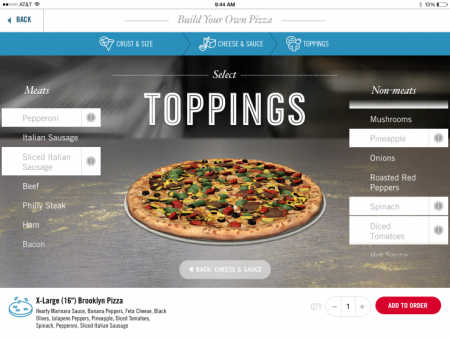July 1, 2015 – It is Canada Day here north of the 49th parallel, the 148th year of the nation’s birth. So today I went to watch my Toronto Blue Jays in action and have just returned to post the first of its kind blog here at 21st Century Tech. The collaboration is with Jessica Oaks, who has been a regular guest contributor. When she approached me about writing about gamification and marketing I responded asking her to include some thoughts about how gamification is being used to advance science and technology. Her response was “why don’t you write that part and we’ll collaborate.” So here it is, the first of its kind and I certainly hope not the last.
———-
You might have heard the term “gamification.” The overall premise is rather simple: apply gaming technology to non-gaming tasks and motivate your audience to achieve a goal. Through gamification you can promote behaviors that participants might otherwise not engage in. It falls in line with the old principle of making work fun.
In business practice today, gamification is being used for employee training and onboarding, customer loyalty initiatives, and unlocking the mysteries of protein interaction in cells. A famous retail example is McDonald’s’ annual Monopoly sweepstakes, borrowing from the famous board game that has been with us for over a century. By offering rewards and employing game-play mechanics, McDonald’s has boosted sales of hamburgers and french fries. And because the sweepstakes is fun, people participate.
But now gamification has gone digital – and it’s being used for mobile and email marketing initiatives among other things.
Emails as Billboards – Fun and Interactive
An overriding premise behind gamification in emails and mobile apps is to make readers and users want to engage. It works as evidenced by applications like Domino’s pizza builder (see image below). Make engagement fun – and target loyal customers – and the results come. But gamification can be more than just a fun exercise.
By catering to customers’ desires and providing an engaging user experience, gamification allows companies to form deep and long-lasting relationships with customers. Immediate financial gains result but the goals go beyond that by creating return customers that continue to buy the company’s products and services, and act as ambassadors for the business.
It doesn’t work for every business, however, and often only a subset of a company’s customer base actually participates. But gamification can be a tremendous marketing tool because for the people it does reach, it proves incredibly effective in driving word-of-mouth connections, loyalty, and sales. That’s why companies looking to implement gamification into their marketing strategy have much to gain.
The How-To of Business Gamification
The first thing businesses must do is make gamification initiatives fun. After all, that’s the whole point. Thankfully, doing so is now easier than ever thanks to advanced mobile GPUs and retina displays. Mobile app gaming s are limited only by imagination. Take Domino’s pizza builder, for example. It features 3D graphics and an interactive pizza, complete with toppings. Even Pizza Hut fan boys have to admit that it’s pretty clever. Mobile apps now feature graphics that would put desktop and console games from a decade ago to shame.
Beyond making a game pretty and engaging, companies also need to think about the fundamentals behind the marketing strategy. Who are their customers? Are their customers motivated by game playing? What do customers stand to gain? What would motivate them to participate beyond the fun factor?
Businesses must be able to answer these questions before setting going down the gaming path. Otherwise, a lot of time, effort, and money may be spent on an idea that falls mostly on deaf ears.
Gamification won’t work for every business. Nor will it work with every customer. But it can work. And mysteriously it just doesn’t work in the for profit world.
Gamification Comes to Science and Engineering
Probably one of the more interesting uses of gamification is in the sciences and in technology applications. Game mechanics provide a number of fields with the means to make significant gains through crowd sourcing solutions as well as through behavior modification.
Foldit is a great example of how gamification can impact scientific discovery. It is an online game that has the public folding proteins. Now protein folding may sound silly but it is not. Proteins play a significant role in cell function. They carry out instructions given to them by genes. The way they are structured can determine whether a body fights off a disease like Ebola or succumbs to it. Proteins contain sequences of amino acids that take many shapes based on the way the protein folds.
In Foldit, citizen scientists get to fold synthetic proteins into different shapes receiving game reward rankings for their effort. The proteins they are creating in the game and the cell interactions are proxies for the real thing. When shared with scientists the latter use the solutions to apply them to real biomedical challenges. In the future, Foldit may be used to create DNA nanomachines with gamers constructing pieces of DNA from scratch that can turn into disease-fighting mechanisms.
Another gamification use is being applied by automobile makers to alter driver behavior. For example Nissan has incorporated gaming into its Leaf electric vehicle (EV) to benefit owners. Its “Eco Mode” software tracks driver habits and provides feedback through the in-vehicle display screen (see below).
Drivers can compete with other Leaf owners to achieve high ranking based on energy-efficient use of the vehicle’s braking system, accelerator, heater, air conditioner and even efficient route selection. Although the drivers don’t win a prize per se their modified behavior pays dividends because they can drive farther on a single charge and can even achieve bragging rights within the Leaf-owner community.
A Final Word
Gamification has even more applicability to touchscreen technology deployed in smartphones and tablets. Everything you do on these devices seems ideally suited for gaming. Through gamification even email messages have a whole new appeal. What you may have automatically trashed or relegated to your spam filter in the past may now be something worth opening and you won’t even mind that those sending you information are the ultimate beneficiaries each time you play. Whether it’s creating your own pizza, folding a protein, or trying to beat your last energy usage EV score, you are getting hooked by gamification.










